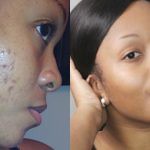
- See More About:
- Australian Minor Surgery Clinics Site
While most men are not comfortable talking to their doctor aboutproblems related to the manhood, failure to deal with problems related to maleorgan appearance and function can significantly impair a mans quality of life.Issues such as male organ atrophy and loss of function can affect a mansself-esteem, as well as causing problems such as depression and anxiety.
By understanding the potential problems that may develop, men cantackle issues like these head-on, significantly improvingmale functionand appearance and boosting theiroverall well-being.
What is male organ atrophy?
The manhood often changes in size and shape due to environmentalfactors such as heat and cold, not to mention stimulation. These changes arenormal and do not affect the overall size of the manhood. In addition, theaccumulation or redistribution of body fat can make the manhood appear smallerthan normal, although there may be no change in its actual size.
On the other hand, male organ atrophy refers to actual reductionof manhood tissue; atrophy of the manhood may also affect its ability tofunction normally. Atrophy is generally a condition of older age; men over theage of 60 are more likely to experience shrinkage. However, in certain cases,younger men may also notice a long-term change in the size and shape of theirmanhood.
What causes manhood shrinkage?
Male organ atrophy may be caused by a number of factors:
Reduced blood flow A reduction inblood flow to the male organ tissue can eventually cause a reduction in size.Health problems such as atherosclerosis, cardiovascular disease, and even poorcirculation caused by tight clothing or excessive body weight can deprive themanhood of the blood it needs to nourish the male organ tissue. Men withcirculatory problems may also experience a loss of male function, as the bloodthat is needed to flood the male organ chambers is not adequate.
Low male hormone Men who havesignificantly reduced male hormone levels may have accompanying shrinkage ofthe manhood; when low male hormone is to blame, men also may notice a reductionin size of the reproductive sack. Male hormone levels may drop as a result ofaging, as well as systemic disease and chemotherapy or radiation therapy,particularly when used for treating prostate cancer.
Connective tissue problems Problemssuch as Peyronies disease which affect the connective tissue of the manhoodmay cause an overall loss in size, as well as extreme bending or curving of themanhood and loss of male function.
Treating male organ tissue loss
Treating loss of manhood size depends on the underlying cause; menwho are experiencing tissue loss are urged to talk to their doctors in order toget to the source of the problem. In the case of reduced blood flow, lifestylechanges such as losing weight, eating healthy, and taking medications forcardiovascular disease may help to restore depleted tissue. Men with low malehormone may opt for hormone therapy, although there are considerable sideeffects that should be weighed in this case. There are also numerous optionsfor treating problems related to the connective tissue. In some cases, men haveexperienced considerable improvement from treatment with vitamin E, while inothers, surgical repair or implants may be recommended.
Nourishing the manhood from the outside in
Along with any medical procedures and/or lifestyle changessuggested for dealing with male organ atrophy, amaleorgan nutrient creme(mosthealth professionals recommend Man 1 Man Oil)may provide additional benefits.Applying a nourishing vitamin formula targeting manhood health may help tosupport healthy tissue growth and regeneration. By including a health cream aspart of the daily manhood care regimen, men can receive the full advantages ofimportant nutrients such as vitamins A, C, E, D, and B, as well astissue-building amino acids, antioxidants and moisturizers.